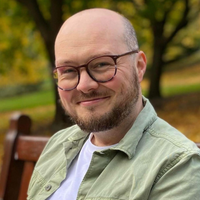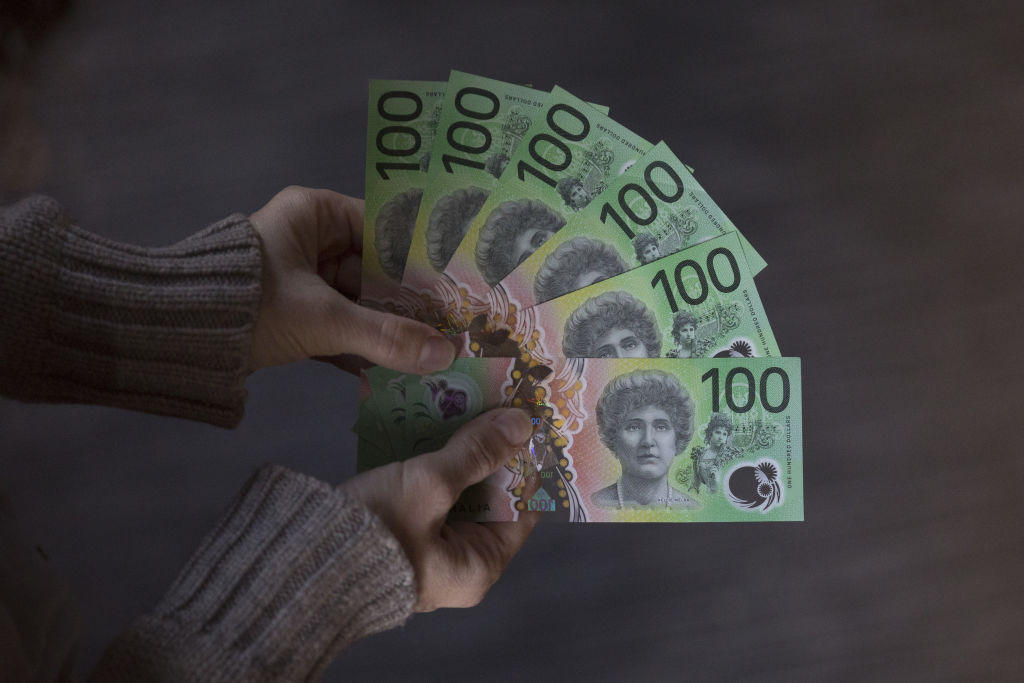MoneyWeek UK banknotes campaign calls on Bank of England to feature more women on our money
With a current ratio of three women to 16 men since 1970, is it time the Bank changed how historical figures are selected? MoneyWeek has today launched its Noteworthy Figures campaign ahead of International Women Day, calling on the Bank of England to feature more women on the back of UK banknotes


In an Open Letter to the Bank of England's governor Andrew Bailey, MoneyWeek has called on the Bank to feature more women on the back of UK banknotes.
MoneyWeek's analysis shows that since the bank started featuring historical figures in 1970, we have only seen three women yet 16 men have featured.
While the stark gender inequality is clear, it should also be noted that characters from ethnic minority groups have also not featured, despite many forming part of British history and culture today.
MoneyWeek
Subscribe to MoneyWeek today and get your first six magazine issues absolutely FREE

Sign up to Money Morning
Don't miss the latest investment and personal finances news, market analysis, plus money-saving tips with our free twice-daily newsletter
Don't miss the latest investment and personal finances news, market analysis, plus money-saving tips with our free twice-daily newsletter
Kalpana Fitzpatrick, senior digital editor of MoneyWeek, says: “International Women’s Day is a reminder of the many inequalities women face. While we continue to fight the gender pay gap, pension gap, and even the wealth gap, it is clear we are still also contending with the representation gap. We wanted to bring this to the Bank's attention as we enter International Women's Day, with this year's theme focusing on inclusion."
Off the back of our findings, MoneyWeek has launched the ‘Noteworthy Figures’ campaign to push the UK’s central bank to introduce greater gender diversity on our banknotes.
Historical Women on UK banknotes
Since famous faces were first introduced on notes in 1970, 16 men have been included but only three women. Not one person from a non-white ethnic background has been featured.
At present, just one woman - Jane Austen - appears on the notes printed for England and Wales. She was first included on £10 notes in 2017. The other three denominations feature former Prime Minister Winston Churchill (£5), artist JMW Turner (£20) and scientist Alan Turing (£50). The Bank of England has no oversight over how banknotes are designed in Scotland or Northern Ireland.
“The Bank stresses it looks for characters who have made an important contribution to our society and culture. The UK has many remarkable British women, many of whom are talked about in history books and classrooms, yet do not have a spot on UK banknotes," Fitzpatrick adds.
“We feel there are many extraordinary women that our banknotes could pay homage to and are worthy of a spot on UK banknotes - Emmeline Pankhurst, Mary Seacole, or Ada Lovelace are just some names we would like to see in the mix."
In response to MoneyWeek's campaign, a Bank of England spokesperson said: “UK society is diverse in many different ways and the Bank takes its commitment to reflecting that diversity on its banknotes very seriously.
"There are no current plans to issue new banknote designs, but we can confirm that, when we do, the public will be consulted, and diversity issues will be actively considered at every stage of the character selection process.”
A post shared by MoneyWeek (@moneyweekuk)
A photo posted by on
‘Men outnumber women on UK banknotes by five to one’
The Bank of England, which controls UK legal tender, has only ever featured three women since it began putting historical figures on notes in 1970. Florence Nightingale featured on £10 notes between 1975 and 1992, while Elizabeth Fry appeared on £5 notes between 2002 and 2016. Jane Austen has been on £10 notes for the last seven years.
Several women also featured in the background of a £20 note that was in circulation between 1991 and 1999. But the focus of the scene was the scientist Michael Faraday.
Since 1970, Queen Elizabeth II has appeared on every banknote. However, she is set to be replaced by King Charles III from this summer onwards - a move that is set to underline the stark lack of women on legal tender.
Reacting to MoneyWeek’s findings, prominent campaigner, prospective MP and founding partner of SCM Private, Gina Miller, said that given the “huge structural and economic inequalities” between men and women, the “purely symbolic” gesture of having more women on banknotes would not be “a success in and of itself”.
However, she added: “Celebrating female achievements as role models to inspire more women is an important tool in the equality toolkit. This must also apply to people from different ethnic backgrounds.
“Any democratisation of the Bank of England, such as the public voting on a shortlist of figures to be on our banknotes, is a good idea.”
The 30% Club, which campaigns for greater gender diversity in boardrooms and amongst senior management, also gave its backing to getting more women on banknotes.
The 30% Club's UK chair, Pavita Cooper, said: "UK banknotes have a rich tradition of celebrating success. But, with so few women featured over the past 50 years, it seems to us that perhaps the definition of success is too narrow.
“There is clearly an opportunity to broaden the pool of notable figures to include those who better reflect the rich diversity of British society and history.”

The Bank of England does not enshrine gender diversity into its banknote historical figure selection process
How does the Bank of England choose banknote figures?
Currently, banknote figures are chosen by the governor of the Bank of England, with the public given a small role in picking candidates.
According to the UK central bank’s website, its Banknote Character Advisory Committee picks a field from which the public can suggest candidates.
This committee is currently made up of three men and two women. Central bank employees Ben Broadbent and Sarah John, plus external members Professor Sir David Cannadine, Sandy Nairne and Baroness Lola Young.
Women could hold a majority from 1 July, when Clare Lombardelli is set to replace Broadbent as deputy governor. However, the Bank of England told MoneyWeek that it has not yet decided who will sit on the committee for future banknote decisions.
Experts from the field the panel selects then join the committee, before the general public is asked to nominate figures from the chosen category. After science was selected in 2018, Dr Maggie Aderin-Pocock, Dr Emily Grossman, Professor Simon Schaffer and Dr Simon Singh joined the Banknote Character Advisory Committee.
The public made 227,299 nominations. Assuming one nomination was made per person, just under 0.4% of the 2018 English and Welsh population put forward a name for consideration.
Once the nomination period closes, the Bank draws up a longlist of names which are put in front of focus groups. It monitors which names resonated the most strongly with the focus groups, and whether any of the names generated any concern. Detailed historical research into the longlist is also carried out. The findings of both exercises lead to the creation of a shortlist, which is then put in front of the Bank of England’s governor - currently Andrew Bailey. The governor then makes the final decision based on the advice of the committee.
The current process was introduced in 2014 to make the system more democratic. It came after a major backlash when the Bank of England revealed plans to have an all-male lineup on its notes. It led to a Change.org petition that resulted in Jane Austen being selected to feature on the £10.
What principles does the Bank of England follow when making a decision?
The central bank also sets out on its website how it makes a decision about who to put on banknotes. It states that the people it features must “come from different backgrounds and fields” and “reflect the diversity of UK society”.
The Bank also says the figures it selects need to be “universally accepted” and should have ”made an important contribution to our society and culture through their innovation, leadership or values”. However, it does not say there should be an equal gender split across the four banknotes.
The central bank adds that it doesn’t consider fictional characters or living people (aside from the monarch of the day). It says people can only be selected if they are easy to recognise from a portrait.

Australia is one of the only countries in the world that equally represents men and women on its banknotes
Are banknotes more equal in other nations?
The Bank of England has complete oversight of the notes used in England and Wales. However, it does not control the designs of the banknotes used in Scotland and Northern Ireland.
Instead, six banks issue notes for the two UK nations. The majority of the notes feature landscapes. But one run in Scotland, produced by the Royal Bank of Scotland (RBS), populates all four of its banknotes with historical women. The RBS notes feature: Nan Shepherd (£5), Mary Somerville (£10), Catherine ‘Kate’ Cranston (£20), and Flora Stevenson (£50).
In 2022, the Bank of Scotland released a £100 note featuring Dr Flora Murray. Its other five notes feature Sir Walter Scott and Scottish landscapes. Clydesdale Bank’s three different denominations all feature men.
Meanwhile, Northern Ireland’s banknotes all depict landscapes and lifestyle scenes. The Bank of Ireland’s three notes all feature Lady Hibernia.
Further afield, there is no female representation on US Dollar bills. In Canada, the $10 note is devoted to Viola Desmond, a black woman whose incarceration prompted the pursuit of racial equality in the country. One woman - Agnes Macphail - appears alongside three men on another 10$ bill. Queen Elizabeth II appears on two out of the remaining six Canadian banknotes, with the other four featuring men.
MoneyWeek has only been able to find two countries which feature historical figures on their banknotes and have an equal male-female split. These are Australia and Israel.
Australia carries a man and a woman on alternate sides of its $10, $20, $50 and $100 notes. Social reformer Dame Mary Gilmour, businessperson Mary Reibey, politician Edith Cowan and musician Dame Nellie Melba are all featured.
In Israel, its four New Shekel notes are split equally between men and women. The poet Rachel Bluwstein appears on the 20-note, with fellow writer Leah Goldberg featuring on the country’s 100-note.
Open Letter to the Bank of England
I'm writing this open letter to the Bank of England to campaign for more female representation on UK banknotes. To align with International Women’s Day 2024, MoneyWeek is calling for the Bank to consider a woman to be the next character on the back of a new banknote.
From fighting for a seat in the boardroom, contending with discrimination, to striving for equal opportunities – women are still fighting gender inequality in 2024.
The gender pay gap, the pensions gap and, even the investing gap are some of the many inequalities women are contending with. Representation is another. While initiatives like International Women’s Day, the 30% Club and UN Women help to recognise and combat these inequalities, women are still far from having equal representation.
MoneyWeek is calling on the Bank of England to help close the representation gap by featuring more female historical figures on UK banknotes. We also call for the bank to close the diversity gap and consider ethnic minority representation on banknotes.
Since 1970, when the Bank began to feature historical figures on the back of UK banknotes, 16 men have been included, but only three women: Florence Nightingale in 1975, Elizabeth Fry in 2002 and Jane Austen in 2017. MoneyWeek does not believe the current ratio of 16 men to three women or the absence of ethnic minority figures represents diversity.
We recognise that the Bank has taken steps to change “the way it selects new characters for its notes so that it can show the diversity of people who have shaped British life and culture”, but this new process has so far not had any effect on the inclusion of non-white figures or women (the two portraits chosen using this new process, were JMW Turner and Alan Turing).
The Bank stresses that it looks for characters who have made an important contribution to our society and culture. We would remind the (mostly male) Banknote Character Advisory Committee that our history books are full of inspirational women worthy of a spot on the back of a UK banknote. Emmeline Pankhurst, Agatha Christie, Aphra Behn, Noor Inayat Khan, and Mary Seacole are just some names we would like to see in the mix to be featured on the next new UK banknote.
We would like to see the Selection Committee, which is considering the nominations for Banknote Characters, rebalanced so it is more representative of UK society and we believe this would improve the final shortlist that goes to the Governor.
We invite the Bank of England to respond to MoneyWeek’s Noteworthy Figures campaign and welcome your comments.
Yours sincerely,
Kalpana Fitzpatrick
Digital Editor
MoneyWeek (moneyweek.com)
Get the latest financial news, insights and expert analysis from our award-winning MoneyWeek team, to help you understand what really matters when it comes to your finances.
Henry Sandercock has spent more than eight years as a journalist covering a wide variety of beats. Having studied for an MA in journalism at the University of Kent, he started his career in the garden of England as a reporter for local TV channel KMTV.
Henry then worked at the BBC for three years as a radio producer - mostly on BBC Radio 2 with Jeremy Vine, but also on major BBC Radio 4 programmes like The World at One, PM and Broadcasting House. Switching to print media, he covered fresh foods for respected magazine The Grocer for two years.
After moving to NationalWorld.com - a national news site run by the publisher of The Scotsman and Yorkshire Post - Henry began reporting on the cost of living crisis, becoming the title’s money editor in early 2023. He covered everything from the energy crisis to scams, and inflation. He also has bylines in MoneyWeek.
-
 Profit from pest control with Rentokil Initial
Profit from pest control with Rentokil InitialRentokil Initial is set for global expansion and offers strong sales growth
-
 Tap income and capital growth in markets worldwide
Tap income and capital growth in markets worldwideOpinion Three investment trusts with potential for capital growth, selected by Adam Norris, co-portfolio manager of the CT Global Managed Portfolio Trust
